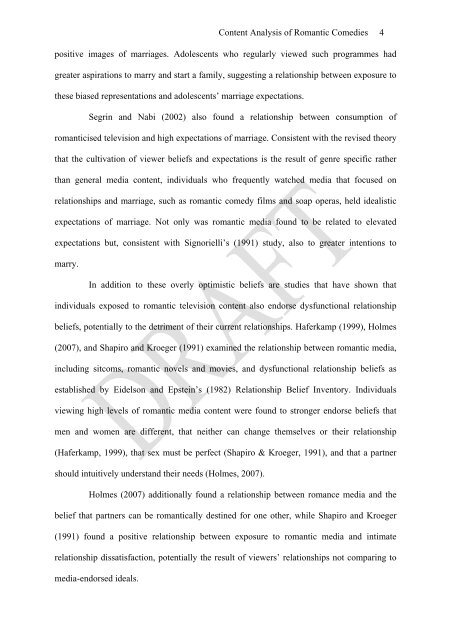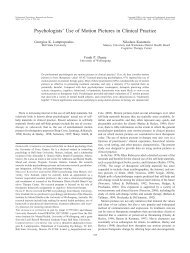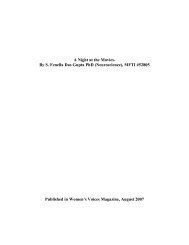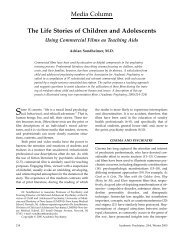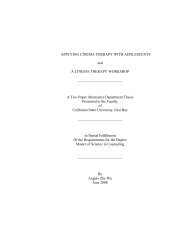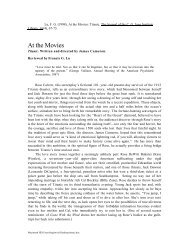Content Analysis of Romantic Comedies IN PRESS ...
Content Analysis of Romantic Comedies IN PRESS ...
Content Analysis of Romantic Comedies IN PRESS ...
Create successful ePaper yourself
Turn your PDF publications into a flip-book with our unique Google optimized e-Paper software.
<strong>Content</strong> <strong>Analysis</strong> <strong>of</strong> <strong>Romantic</strong> <strong>Comedies</strong> 4positive images <strong>of</strong> marriages. Adolescents who regularly viewed such programmes hadgreater aspirations to marry and start a family, suggesting a relationship between exposure tothese biased representations and adolescents’ marriage expectations.Segrin and Nabi (2002) also found a relationship between consumption <strong>of</strong>romanticised television and high expectations <strong>of</strong> marriage. Consistent with the revised theorythat the cultivation <strong>of</strong> viewer beliefs and expectations is the result <strong>of</strong> genre specific ratherthan general media content, individuals who frequently watched media that focused onrelationships and marriage, such as romantic comedy films and soap operas, held idealisticexpectations <strong>of</strong> marriage. Not only was romantic media found to be related to elevatedexpectations but, consistent with Signorielli’s (1991) study, also to greater intentions tomarry.In addition to these overly optimistic beliefs are studies that have shown thatindividuals exposed to romantic television content also endorse dysfunctional relationshipbeliefs, potentially to the detriment <strong>of</strong> their current relationships. Haferkamp (1999), Holmes(2007), and Shapiro and Kroeger (1991) examined the relationship between romantic media,including sitcoms, romantic novels and movies, and dysfunctional relationship beliefs asestablished by Eidelson and Epstein’s (1982) Relationship Belief Inventory. Individualsviewing high levels <strong>of</strong> romantic media content were found to stronger endorse beliefs thatmen and women are different, that neither can change themselves or their relationship(Haferkamp, 1999), that sex must be perfect (Shapiro & Kroeger, 1991), and that a partnershould intuitively understand their needs (Holmes, 2007).Holmes (2007) additionally found a relationship between romance media and thebelief that partners can be romantically destined for one other, while Shapiro and Kroeger(1991) found a positive relationship between exposure to romantic media and intimaterelationship dissatisfaction, potentially the result <strong>of</strong> viewers’ relationships not comparing tomedia-endorsed ideals.


